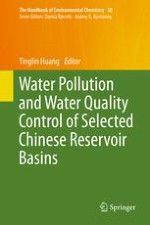2016 | OriginalPaper | Buchkapitel
Typical Reservoir Pollution Source Analysis
verfasst von : Xinxin Shi, Weixing Ma, Xuan Li, Ya Cheng, Tinglin Huang
Erschienen in: Water Pollution and Water Quality Control of Selected Chinese Reservoir Basins
Aktivieren Sie unsere intelligente Suche, um passende Fachinhalte oder Patente zu finden.
Wählen Sie Textabschnitte aus um mit Künstlicher Intelligenz passenden Patente zu finden. powered by
Markieren Sie Textabschnitte, um KI-gestützt weitere passende Inhalte zu finden. powered by
